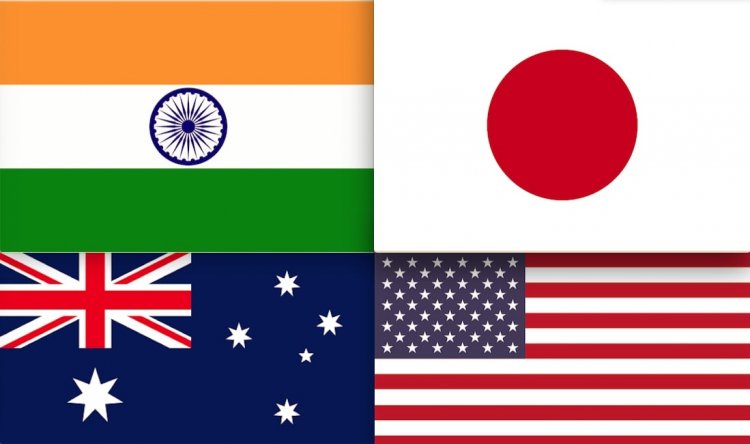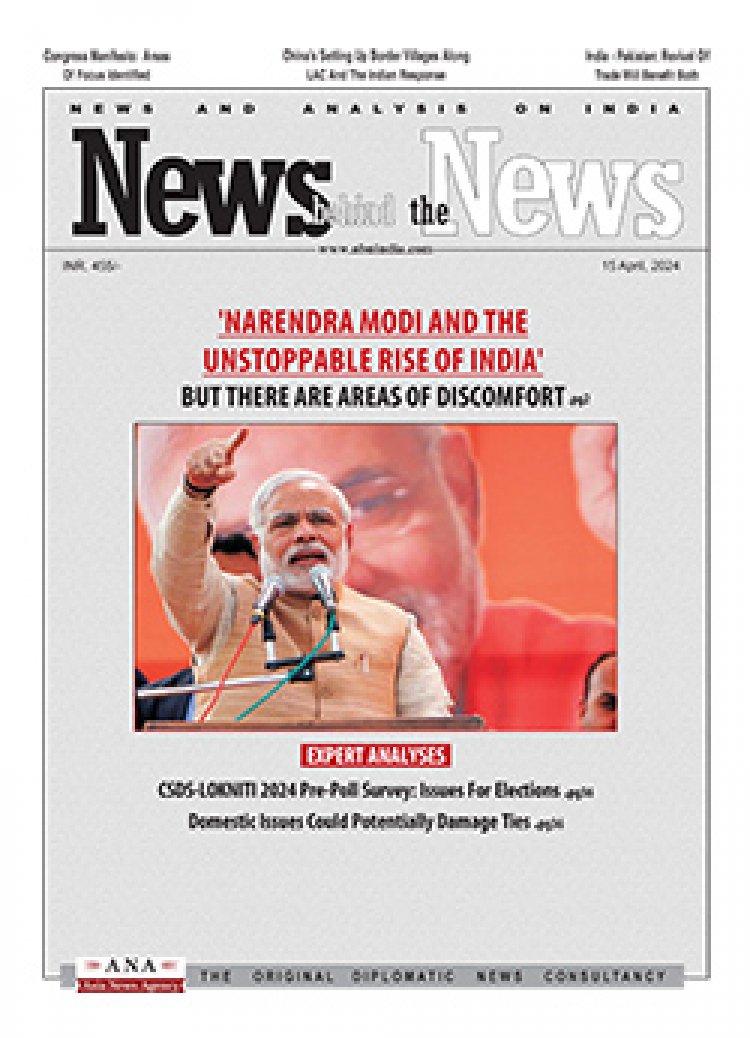Quad: India’s Strategic Autonomy Works
STORIES, ANALYSES, EXPERT VIEWS

After the second in-person leaders’ summit in Tokyo on May 24, the Quad has emerged stronger and clearer in its strategy and goals for the security and prosperity of the Indo-Pacific.
India and the U.S., writes Rajiv Bhatia (Distinguished Fellow, Gateway House and a former Ambassador) “agreed to disagree on Ukraine, but showed full readiness to further strengthen the Quad and their bilateral cooperation, which, U.S. President Joe Biden said, he was ‘committed to making…among the closest we have on Earth’.”
China, the central driving force
The central driving force of the Quad, says Dogra “is to counter China’s growing expansionism and belligerence. The grouping’s diplomatic device of defining its raison d'être without ever using the word ‘China’ was best reflected in the ‘Quad Joint Leaders’ Statement’ which reads, 'We reaffirm our resolve to uphold the international rules-based order where countries are free from all forms of military, economic and political coercion.’ Thus, China is not only the glue that holds the Quad together; it is also the fuel that may, through Beijing’s bad behaviour in the future, drive the grouping’s inner consolidation, as shown by an expanding agenda.”
Beyond protecting fishing: China, therefore, without being mentioned, is the real target of the QUAD. The information-sharing in the Indo-Pacific Partnership for Maritime Domain Awareness (IPMDA) for example, is designed to respond to humanitarian and natural disasters and combat illegal fishing. Lt Gen (Dr) Prakash Menon (retd) is Director, Strategic Studies Programme, Takshashila Institution; former military adviser, National Security Council Secretariat) writes although Quad wants to stop illegal fishing in Indo-Pacific, “but the net is actually for one shark” and that is China.
“The idea is to integrate regional information fusion centres in the Indian Ocean, Southeast Asia, and the Pacific Islands. In the strategic competition, sharing of information is key. Strategically, it has heft as the integrated capacity created can also be used for military purposes. Though some mechanisms for sharing information already exist, it is a renewed thrust.”
Quad agenda now covers nine sectors
The real purpose of the Quad is camouflaged according to some analysts. Its overt agenda now covers nine sectors: vaccine partnership and health security, climate action, critical and emerging technologies, cooperation on infrastructure, cyber security, space cooperation, education and people-to-people ties, maritime domain awareness, and humanitarian assistance and disaster relief. The Quad claims to have established ‘a positive and practical agenda’ in year one; in year two, it will focus on ‘delivery.’
Not all commitments have been met. The promise of making available at least one billion COVID-19 vaccine doses to Indo-Pacific countries has fallen short.
On infrastructure, a new commitment was made at Tokyo for the Quad to extend over $50 billion in investment and assistance to the Indo-Pacific countries over the next five years. While the focus is on the ASEAN countries and the Pacific Island States, Dogra feels “a part of this funding should perhaps reach the Indian Ocean region too, with its touch points in Africa. The Common Statement of Principles on Critical Technology Supply Chains is significant, as it concerns cooperation on semiconductors.”
The IPEF is ambitious, but doable
The atmospherics of the summit improved significantly after the launch of the Indo-Pacific Economic Framework for Prosperity (IPEF). The joint announcement was made by the Quad, seven ASEAN member-states (excluding Myanmar, Cambodia and Laos), South Korea and New Zealand. The plan is to prepare their economies for the future by conducting negotiations on the pillars of trade; supply chains; tax and anti-corruption and clean energy; decarbonisation and infrastructure. The IPEF is ambitious, but doable.
Simultaneous engagement with Quad and BRICS is India’s strategic autonomy in full play
India’s constructive participation in the Tokyo summit and agreement to join IPEF demonstrated commitment to strengthening its strategic partnerships in order to push back China’s dominance. At the same time, New Delhi has agreed to the expansion of BRICS membership. Dogra writes “this simultaneous engagement with the Quad and BRICS is New Delhi’s strategic autonomy in full play. India’s presidency of the G20 in 2023 and the likelihood of India hosting the Quad summit in 2024 will ensure that it follows a calibrated policy and stays on track, as every major step will attract international attention.”
India’s dangerous gambit
Critical of the Quad, MK Bhadrakumar (former Ambassador) writes “Ironically, the Quad statement never once directly mentioned China but it took a forceful stance on the Russia-Ukraine conflict. By doing so, the US is stealthily leaving footprints of its increasing presence on the Asian soil, and creating precedent to use Quad as a geopolitical tool to meddle in regional affairs selectively. An ostrich-like approach on India’s part is unwise. The Quad is not yet iron-clad, but the US intends to use it to maintain its hegemony and hopes to mould India steadily into an obedient partner like Japan or Australia while pampering its vanities. Any leniency at the Tokyo summit can only be regarded as temporary reprieve, since Washington remains confident about firming up India’s ‘shaky’ stance.
“Some Indian analysts blithely assume India can now have the best of both worlds in these extraordinary times of polarisation in the world order by tiptoeing to the brim of the boiling inferno and looking in but avoiding getting incinerated. But that is naïveté as there is no foreign policy issue that is so central to the US’ global strategy as ‘erasing Russia’.
India’s presence in Quad gives the grouping the much-needed legitimacy, something that Japan or Australia can never substitute. But India remains an outlier. The US, Japan and Australia privately coordinate, align, and reach consensus and India is persuaded to tag along. Of course, India’s motivations are self-centred too — to maximise interests by leveraging itself against China to extract funds, technology, and aid from its Quad partners. True, Quad is but one of India’s foreign policy tools to engage in international affairs and expand geopolitical interests. But this dangerous gambit ignores the gathering storms in the Indo-Pacific…..”
















